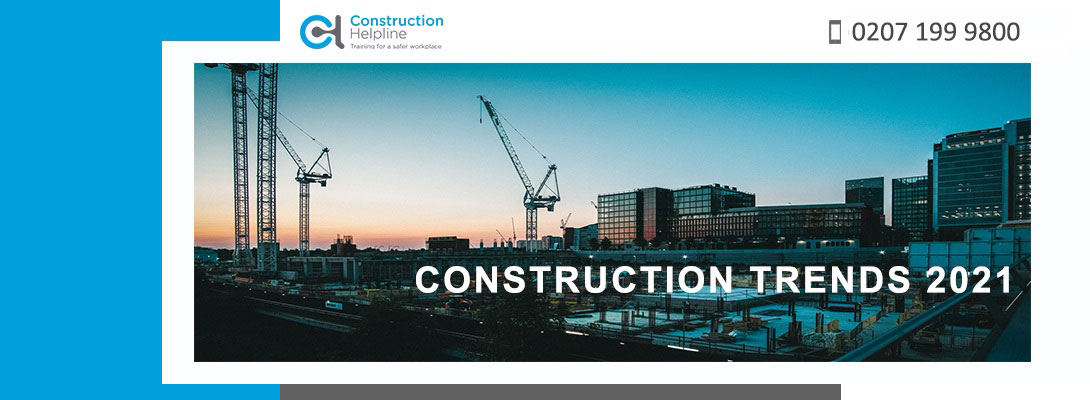The year 2020 has been nothing else but a movie, so if you had the chance to follow the development of the construction industry you noticed how much industry has changed over the year. New rules, legislation, and experimentation with innovative materials is just the beginning of the list. Today, our team at Construction Helpline will have a look at 5 main trends that will change the construction industry next year.
Trend # 5. Investing in Construction Qualifications
It is an axiom that Covid-19 and Brexit have created shockwaves across every facet of our everyday lives, but more than others, it has affected the employment market to which we depend on. Right now, companies are struggling to make their financial ends meet so the ability to hire new staff is deeply restricted. That means, companies must set their sights on individuals that can deliver beyond expectations. An important indication to a person being capable of working above a sub-par level is qualifications – especially in the construction industry.
The time to be complacent and thinking that a company will “just” hire you is over. We need to think about the bigger picture and look for innovative ways of improving our skill set, knowledge and experience. Construction Helpline offers a wide range of industry-leading construction courses such as CSCS cards, NVQ courses, and CITB CSCS tests, we also have a dedicated team that will support you throughout the entire process – so be sure to check them all out here.
Trend # 4. 3D Printing for Home Construction
Oaten called Additive Manufacturing, you have probably heard about this new technology taking over headlines in the construction industry. In the field, it is essentially a large metal nozzle, methodically placing concrete in a sequential pattern to create buildings, bridges, and other impressive projects. Today, this technology is being used to build houses in Mexico, Russia and the UK, as it improves safety and efficiency.
The goal of the project is to demolish slums from the face of the earth and maybe in the next few years this will become the norm in building houses. However, there are still a lot of regulatory and technological changes to be done. It is unlikely that 3D printing will fully replace traditional construction methods, however, there is a chance that the production of such products will become more accessible to people around the world.
Trend # 3. Modular Designs
Prefabricated houses and modular construction have become extremely popular in the construction industry. The manufacturing process and the accompanying result are ideally suited to the current economic and epidemiological situation around the world.
They are ideal for businesses where, for example, separate offices or new buildings in a hospital are needed. As for the construction of residential buildings, such houses can be erected very quickly and are easily transported by trucks.
Trend # 2. Energy Efficiency
Energy efficiency is staple trend that will be gaining huge momentum in 2021. Having a home that is using energy efficient technology is not only a massive budget saver for the family, but it is a crucial practice that ultimately help save the planet from further ecological damage. In recent years, technologies such as solar electricity, solar water heating, recessed lighting fixtures, pipe wall penetrations and weather stripping has become more practical and cheaper for the consumer.
Trend # 1. BIM Design
Why did we put this trend first? The fact is that today a potential buyer wants to know the exact cost of a house before starting construction. This technology is based on a virtual three-dimensional model that has real physical properties. Additional dimensions are added to this model, such as: time, plans and cost.
All this will not only help to calculate and determine the parameters of the construction processes before the start of construction, but this model will also help to reduce the project implementation time. BIM-design will simplify the operation of the erected object and will be able to extend its service life due to a full-fledged model, on which there will be an “X-ray” of the house.


